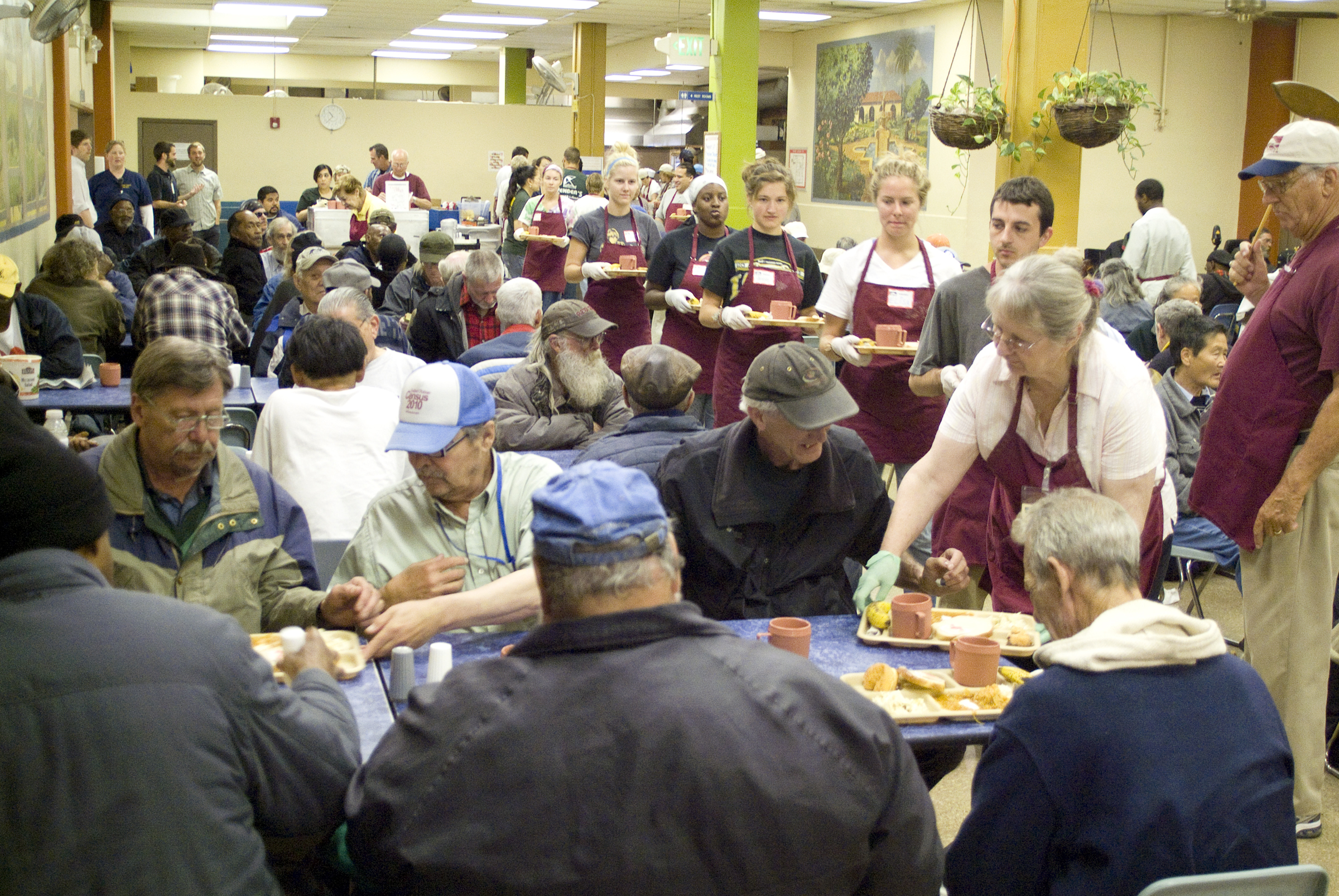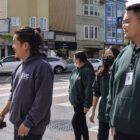This much is clear: the lack of public restroom facilities in the Tenderloin is causing a stench. Fecal matter covers the streets, making it nearly impossible to walk without looking down to dodge the droppings. But what is less clear is who’s to blame.
In late February, SF Weekly, the Examiner and the Chronicle each ran stories accusing food service providers of not offering adequate bathroom facilities to accompany their operations – effectively saying that they were stuffing people with food, then giving them no place to go afterwards.
However, an investigation by the Public Press showed that the largest non-profit kitchens, which serve food more than three days a week to thousands of hungry people in the Tenderloin, also provide restroom facilities.
The problem is that they don’t stay open at night, and are closed during evenings and very early in the morning when the homeless need those most.
"If I want to go to a job interview, I have to go first thing in the morning, and when does Glide start serving? 8:30 or 9,” said Jim Rokas, an out-of-work contractor who sells the Street Sheet in front of City Hall. "Really, the only way to find a restroom before 7 a.m. is to buy yourself a cup of coffee at Starbucks,” something he and others in his situation are often forced to do —spending what little money they have just to relieve themselves.
In response to the high volume of human waste in the Tenderloin, the North of Market/Tenderloin Community Benefit District is working with meal providers to include extended bathroom hours as part of their city contract. Ideally, said the group’s interim director, Dina Hilliard, service center facilities would remain open until midnight or later.
“We feel it’s everyone’s task. But we’re not letting other agencies off the hook,” said Hilliard. “We’re trying to coordinate so it’s not a huge impact to provide services.”
Karl Robillard, the senior manager of communications and outreach at St. Anthony’s Foundation, on Golden Gate Avenue in the Tenderloin, defended his kitchen’s policy. “We provide facilities not only to current diners but to those that return a few hours later. We recognize there are times when you need to use a bathroom and a system of care is really important,” he said.
The facilities at St. Anthony’s were never intended to be used for dining, added Robillard. But now, what started out as an operation serving 300 meals a day, is providing more than 2,000. Open daily from 8 a.m. to 4:30 p.m., the non-profit has increased the number of bathrooms and made them closer to the door, Robillard said, though he acknowledged there’s still much room for improvement.
“We want to be at the table with groups and non-profits offering bathrooms and advocating with people that can make that change.”
In the meantime, the only three free public facilities in the Tenderloin – which is home to the highest concentration of San Francisco’s estimated 6,500 homeless— are constantly broken, closed down or used for illicit activities.
Other challenges stand in the way as well. For starters, increasing toilet facilities means increasing the costs of hiring security personnel to guard them. For Hilliard, of the Market/Tenderloin Community Benefit District, one strategy to improve bathroom accessibility involves a “block schedule,” in which hours are coordinated between local service providers to make sure that one supervised restroom remains open at all times of the night. Her group has already agreed to spend $1,300 per month, most of it for security, to pay for a single bathroom at the S.F. Rescue Mission in the Tenderloin.
Another suggestion is to temporarily replace the ads that are displayed on the sides of the free-standing public restrooms with a map and list of other toilet facilities. Replacing ads would mean a loss in revenues for the city, but there would be other wide-reaching gains, said Hilliard.
“The overall benefits would serve the community, to know where the bathrooms are and hours,” she said. “I think the city could partner with us. This is an area where everyone has to compromise a little bit. If we really care about our homeless, we should respect them enough to give them a place to go to the bathroom in private.”










